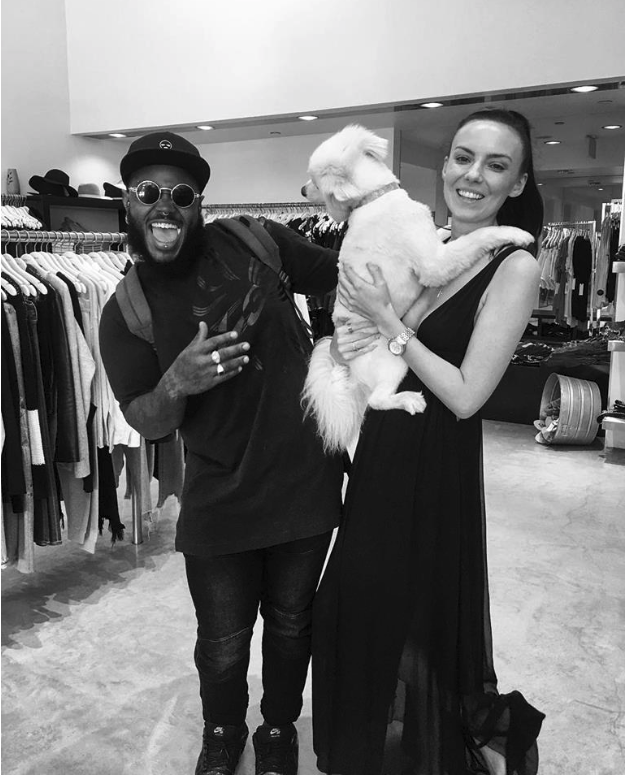Before we get to clienteling, let’s start with Dorian Nicholson. People walk into Dorian’s store just to take his picture. It happens at least once a day. Piercings hang from his nose, lips, ears and cheeks. He’s been known to rock dreadlocks, mohawks, braids and bleach. Dorian is fit. Listens to EDM. No one is sure where his tattoos begin. Or end.
He poses for your camera. Takes the selfie. Then starts asking questions. The questions are genuine. His smile, inviting. You forgot what the hell you’re doing there. It doesn’t matter. Dorian leads you to the dressing room. He tells you trying on clothes is free.
You walk out the store with multiple shopping bags.
Lock It In
Clienteling begins the moment customers walk into the store. Greet them. Then start to analyze the customer. Watch how they move, their body language. Now you have an idea of what you’re going to pitch them before you even know what they are there for. Whether they’re shopping for somebody or themselves, find something that they can relate to. Once you’re in, start the sale. Get a little bit about their personal life along the way. When you know what they’re about, from there you know what you can offer. You know what fits them. That’s the first step to transforming a customer into your client.
Clienteling Follow Up
They like the store. You’re good. They like the product. You’re good. So build that friendship. Clienteling doesn’t just end with the sale. It actually continues more. First and foremost, what I learned while working in luxury is that clienteling is all about the follow up: the thank you. Whether it’s two or three days after the sale, a thank you for your business establishes the relationship. It reminds them that you are reaching out. That you are there for them. And let them know that you enjoyed that experience shopping with them. From there you wait for them to respond back.
Connect
I like to email. Sometimes you don’t hear back. Don’t give up. It might take them a minute. Maybe they don’t check that email often. Be patient, but aggressive. Ask if they prefer a phone call instead. Or a Text. You’ll never know until they respond. But it’s up to you to take that initiative. You can even ask when you first meet them, but I like to surprise clients with that initial email. I find that it’s best to send that email or text first thing in the morning, usually when they get into the office.
It’s all based on the relationship. It’s all about the connection.
Do this: you know how you’ll just drop a friend a text, randomly? Asking what’s up or how they are. Do that with your clients. Build a bond. Don’t always have an agenda. Keeping that bond. That’s the main key to clienteling.
Make that connection early, they need to trust you.
Let It Flow
If you’re working in sales, you have to put yourself out there. Don’t be too pushy, though. It has to be a natural flow.
Look at clienteling like this: you’re hosting a party at your house. If somebody comes into the house and you want to be a good host, this is your responsibility. Greet them. Talk to them. You have to be there for them.
I feel like all stores should prepare their staff and let them know that they have to be persistent. It becomes a little bit easier with practice. And then once you know the product and you can feel people’s energy, you become a little more comfortable from practice. Your confidence grows. Confidence is everything.
When you’re confident, you can sell anything. You just have to train your staff and bring that out of them.
Take Notes
When you shop with me, it’s usually a 30 to 40 minute process. I’m giving the client a whole outfit. They may be coming in for a pair of jeans, but I’m going to give them a whole look. While they’re trying on everything, ask where they’re from. What do they do? Things like that.
Clienteling is all about info. Start taking notes on that client so when you do reach out to them, you know to ask: How was that event? How’s the family? When are you going on vacation again? Gather all the information, from address to email to phone number. I always calculate measurements and any kind of other details on the client that will help me remember them.
Invite
I’ve worked a lot of events like grand openings or art shows, and I’ve seen some fail and I’ve seen some happen. It’s usually because you didn’t plan or because you did it last minute. Not to say last minute doesn’t work; you could still have a good turn out. But if you are having an event in your store, plan it a couple of months in advance. Create an email blasts letting your customers and clients know about it. If you do a particular release around the event, that also builds hype and more people come out as well.
Lock in the proper DJ and your local celebrities. Have influencers come in and push the brand. Plan ahead and hit it from all angles. If you are a local shop, reach out to your supporters because the locals are the ones that are going in regularly and drive business. They are the ones that are going to go there and make the store look full. That’s their home shop.
Sales
Working in luxury taught me how to go beyond selling just one piece. Even though I was selling a $300 t-shirt, that wasn’t enough. That’s how I learned to sell the whole outfit. Add ons. For example: a great way to outdo it; if someone is coming in to try on a pair of jeans, bring them a pair of shoes. They have to take off their shoes anyway. So why not get them into your shoes as they are trying on the jeans. Then you throw them a t-shirt. From there, you get the jacket, you put the jacket on them and you tell them: trying on is free.
I want to show you the whole look and what it is to shop with me. Here’s this. Try that. Then there you go. You’re not throwing things at them. Keep it laid back. Be honest. Build that trust. That’s how you go from selling a $400 pair of jeans to closing a $5,000 sale.
We all have goals we have to make. This helps you out in the future because you’re learning. You start thinking beyond that one item or unit. That’s how you increase your UPT. It helps you and it helps out the customer.
E-Commerce
This can go 50/50. A lot of people do shop online because it’s quick. It’s easy. More spontaneous. But I do feel that people buying online end up returning or exchanging anyway. It’s not the proper fit. It didn’t look right. It didn’t look the same. It doesn’t work. Now, I feel it’s better when they do come in and do get the experience because you get so much more product knowledge. You can have one model of denim that’s the same fit, but they can be made with different materials. They all could fit totally different. The average customer wouldn’t know that just by shopping online. So instead of ordering online and wasting their time, they’ll come in the store and 30, 40 minutes later; they know. They’ll have the knowledge and understand that sometimes you need to go down or up a size.
Shopping online drives people into the store. I promise.
Stockroom
It’s all about grouping and labeling. Depending on your product, you want to separate things by fit. Everything must be size ordered so it’s easier to find. And labels help out a lot. Once it’s labeled and you can match it. Then it’s good.
Definitely keep your stockroom clean because it will be easier for you to find your product. Then go over it, at least once a week. So you and your staff are sure where everything is.
It’s very important when it comes down to sales and finding product. You’re going to miss out on a sale if you can’t find that right size or that shirt is in the wrong place. You’re playing the time game. And customers don’t want to wait. They want to feel like a V.I.P.

Dorian Nicholson has been working in retail for a minute. He is a New York native and launched his career at the Gap on 5th Avenue, 13 years ago. Dorian received his B.A. in Mass Communications from Clark Atlanta University. He was the general manager for the Italian brand, ARI, and is currently preparing for a relocation to Amsterdam, where he plans to open a concierge business.
To learn more about how CB4 helps retail operations teams improve floor execution and improve same-store growth, take a look at our Research & Reports, where you’ll find industry insights, product overviews, case studies, and more.



